https://www.houzz.com/ideabooks/68741688/list/native-plants-help-you-find-your-garden-style
Native Plants Help You Find Your Garden Style
Imagine the garden of your dreams designed with plants indigenous to your region
Margaret Oakley Otto June 24, 2016
Houzz Contributor. Margaret Oakley Otto is Design Director for Oakley Gardens, a boutique landscape design and consulting firm in Los Angeles that focuses on sustainability and environmental stewardship. For nearly a decade, she has designed intimate garden spaces that connect people with nature. Margaret coordinates the Theodore Payne Foundation for Wildflowers and Native Plant’s annual Native Plant Garden Tour and is a Southern California Field Consultant for the California State Park Foundation’s Park Champions Program. Margaret blogs at Acorn Radicle, where she shares the life-affirming tidbits that she gathers from her work with and around the earth.
Gardening with plants native to your region is a powerful local choice that protects global biodiversity and creates an authentic sense of place. The design challenge with natives is ultimately one of imagination — we must imagine, for example, that the large green shrub with berries on it that grows in the hills or mountains 15 miles from where we live can be pruned and shaped to fit our garden.
It is completely possible to evoke an array of garden styles with native plants. All it takes is an understanding of design principles for the style you are trying to achieve, creativity in using the plant materials that you normally see growing in the wild, and the knowledge of how to maintain those plants to achieve your desired effect.
Native Plants 101
It is completely possible to evoke an array of garden styles with native plants. All it takes is an understanding of design principles for the style you are trying to achieve, creativity in using the plant materials that you normally see growing in the wild, and the knowledge of how to maintain those plants to achieve your desired effect.
Native Plants 101
This dry creek interplanted with a mix of California native grasses directs and captures rainwater. Design by Richard Grigsby of The Great Outdoors Landscape Design & Construction.
Most of us live in urban or suburban areas, where our landscapes have a visual impact on many other people, and it’s important to utilize design principles when creating your native garden. In the end, you will be much happier with the result.
As a general rule of thumb, almost all beautiful landscapes utilize repetition of the same species, or a variation of the same species, to create a sense of cohesion and harmony. You’ll notice lots of repetition in gardens designed by Mother Nature too. By picking one or two plants to repeat throughout your native landscape — among your other plants — you will create a sense of calm and order.
Most of us live in urban or suburban areas, where our landscapes have a visual impact on many other people, and it’s important to utilize design principles when creating your native garden. In the end, you will be much happier with the result.
As a general rule of thumb, almost all beautiful landscapes utilize repetition of the same species, or a variation of the same species, to create a sense of cohesion and harmony. You’ll notice lots of repetition in gardens designed by Mother Nature too. By picking one or two plants to repeat throughout your native landscape — among your other plants — you will create a sense of calm and order.
Basic Garden Styles
If you are in the position of creating a native garden from scratch, here are some stylistic approaches to consider as you plan. These principles are also helpful to keep in mind when editing or updating an existing garden. Your landscape style choice might be influenced by the architecture of your home, the history of your area or garden spaces you find inspiring.
If you are in the position of creating a native garden from scratch, here are some stylistic approaches to consider as you plan. These principles are also helpful to keep in mind when editing or updating an existing garden. Your landscape style choice might be influenced by the architecture of your home, the history of your area or garden spaces you find inspiring.
This modernist backyard utilizes clean, delineated hardscape materials of gravel, decomposed granite and concrete. Native penstemons are planted in squares, while a palo verde tree casts delicate shadows on the decomposed granite. Young ceanothus is planted as a screen against an aluminum fence.
Modern. An architectural or a more modern design emphasizes plant shapes and foliage textures over flowers — though you can certainly include flowering plants. A key rule of thumb is to keep the number of plant species you are using to a minimum. Less is more. That doesn’t mean you can’t create a garden that feels full, alive and lush. Rather, it means choosing a minimalist palette of three to five species of plants, for example, and repeating them throughout the space.
Pick plants that are well-scaled to the space: For a small space, pick smaller native grasses, ground covers and shrubs that reach a mature size no larger than 4 feet tall and wide. If you have the space, one courtyard-size tree or large shrub pruned into a tree can be a nice focal point or shade creator. For larger areas, you can pick larger-scale plants, but stick to the principle of a restrained palette with an emphasis on plant foliage.
Modern. An architectural or a more modern design emphasizes plant shapes and foliage textures over flowers — though you can certainly include flowering plants. A key rule of thumb is to keep the number of plant species you are using to a minimum. Less is more. That doesn’t mean you can’t create a garden that feels full, alive and lush. Rather, it means choosing a minimalist palette of three to five species of plants, for example, and repeating them throughout the space.
Pick plants that are well-scaled to the space: For a small space, pick smaller native grasses, ground covers and shrubs that reach a mature size no larger than 4 feet tall and wide. If you have the space, one courtyard-size tree or large shrub pruned into a tree can be a nice focal point or shade creator. For larger areas, you can pick larger-scale plants, but stick to the principle of a restrained palette with an emphasis on plant foliage.
The red tubular flowers of California native snapdragon dangle over square pavers here, with a fine gravel neatly edging the path.
Negative space is an important part of architectural landscape design. This means leaving some empty space for the eye to rest between, in front of or around and behind plants. Negative space can be created with low-growing native ground cover plants or with inorganic materials such as gravel or mulch. Spacing your plants so you can see the full shape of each plant is another way to utilize negative space. Create a sense of spaciousness by shaping hardscape areas, such as walkways or seating areas, with clearly defined lines.
Read more about modern garden style
Negative space is an important part of architectural landscape design. This means leaving some empty space for the eye to rest between, in front of or around and behind plants. Negative space can be created with low-growing native ground cover plants or with inorganic materials such as gravel or mulch. Spacing your plants so you can see the full shape of each plant is another way to utilize negative space. Create a sense of spaciousness by shaping hardscape areas, such as walkways or seating areas, with clearly defined lines.
Read more about modern garden style
Dune sedge (Carex pansa) makes for a lovely ground cover and provides plenty of space for the eye to rest in this classical garden designed by Wynne Wilson.
Classical. Classical garden style emphasizes balance, proportions and symmetry, and evokes the ancient architecture of Greece and Italy. This effect can be achieved with native plants — just be sure to use a limited plant palette and consider plants that can be pruned into more formal shapes, such as rounded shrubs, boxy hedges or columnar plantings. In Southern California, Catalina cherry (Prunus ilicifolia lyonii), native to the Channel Islands, makes an excellent formal hedge.
Read more about classical garden style
Classical. Classical garden style emphasizes balance, proportions and symmetry, and evokes the ancient architecture of Greece and Italy. This effect can be achieved with native plants — just be sure to use a limited plant palette and consider plants that can be pruned into more formal shapes, such as rounded shrubs, boxy hedges or columnar plantings. In Southern California, Catalina cherry (Prunus ilicifolia lyonii), native to the Channel Islands, makes an excellent formal hedge.
Read more about classical garden style
The purple flowers of Cedros Island verbena (Verbena lilacina) mix with vibrant yellow and orange monkey flowers (Diplacus sp.) and vibrant pink Clarkia wildflowers in this California native cottage garden. An Australian native bottlebrush tree provides a vibrant red nectar source for hummingbirds nearly year-round.
Cottage. A native cottage garden evokes a sense of abundance, emphasizing a profusion of color and blooms and including numerous plant species with different textures. This style allows for a more diverse plant palette and is achieved by planting to fill a garden space. For example, you’ll want to know that the mature size of a ceanothus is 10 feet by 10 feet, and space the next plant roughly 5 feet from the center of your ceanothus.
There is less emphasis on negative space in a cottage garden, though carving out spaces for the eye to rest can still be beneficial. Use warm, rustic materials for hardscapes, such as aged wood for fencing and aged brick or stone for a walkway, and incorporate garden objects that draw the eye to important areas of your garden. Vintage garden furniture also makes an excellent complement to a native cottage garden.
Wildflowers absolutely lend themselves to a cottage garden. There is no sweeter way to evoke an authentic sense of place than by sowing seeds for wildflowers that are native to your area — you may even discover some beauties you’ve never seen before. Just be sure to balance your seasonal wildflowers with perennial shrubs that look more or less the same year-round, so your garden doesn’t look too barren when the wildflowers disappear.
Read more about cottage garden style
Cottage. A native cottage garden evokes a sense of abundance, emphasizing a profusion of color and blooms and including numerous plant species with different textures. This style allows for a more diverse plant palette and is achieved by planting to fill a garden space. For example, you’ll want to know that the mature size of a ceanothus is 10 feet by 10 feet, and space the next plant roughly 5 feet from the center of your ceanothus.
There is less emphasis on negative space in a cottage garden, though carving out spaces for the eye to rest can still be beneficial. Use warm, rustic materials for hardscapes, such as aged wood for fencing and aged brick or stone for a walkway, and incorporate garden objects that draw the eye to important areas of your garden. Vintage garden furniture also makes an excellent complement to a native cottage garden.
Wildflowers absolutely lend themselves to a cottage garden. There is no sweeter way to evoke an authentic sense of place than by sowing seeds for wildflowers that are native to your area — you may even discover some beauties you’ve never seen before. Just be sure to balance your seasonal wildflowers with perennial shrubs that look more or less the same year-round, so your garden doesn’t look too barren when the wildflowers disappear.
Read more about cottage garden style
Andreas Hessing of Scrub Jay Studios designed this eclectic, semiformal collector’s garden.
Eclectic. An eclectic garden by definition is a combination of other styles. Going for an eclectic look can free you up to express your taste and personality. But eclectic can quickly slide into chaotic if design principles are not followed.
Be sure to use repetition of the same plants for a sense of harmony, and avoid an overly long list of plants. And includes places for the eye to rest, such as hardscapes or ground covers. Try to create a theme for the objects in your landscape to prevent a sense of randomness. But have fun with introducing unexpected elements. Rules, after all, are meant to be broken sometimes.
Eclectic. An eclectic garden by definition is a combination of other styles. Going for an eclectic look can free you up to express your taste and personality. But eclectic can quickly slide into chaotic if design principles are not followed.
Be sure to use repetition of the same plants for a sense of harmony, and avoid an overly long list of plants. And includes places for the eye to rest, such as hardscapes or ground covers. Try to create a theme for the objects in your landscape to prevent a sense of randomness. But have fun with introducing unexpected elements. Rules, after all, are meant to be broken sometimes.
A calming Buddhist statue sits atop a recycled-concrete garden wall in front of vibrant purple Cedros Island verbena (Verbena lilacina).
There are numerous variations on each of these styles, and you can celebrate your own cultural heritage or the history of your region by incorporating objects or stylistic accents that have symbolic meaning and significance.
Next: Maintaining your native
-------------------------------------------------------------------------------------------------------
Next Link:
How to Find the Right Native Plants for Your Yard
There are numerous variations on each of these styles, and you can celebrate your own cultural heritage or the history of your region by incorporating objects or stylistic accents that have symbolic meaning and significance.
Next: Maintaining your native
-------------------------------------------------------------------------------------------------------
Next Link:
How to Find the Right Native Plants for Your Yard
How to Find the Right Native Plants for Your Yard
Find plant maps, sale sites and guides that make going native in the garden easier than ever
Benjamin Vogt March 29, 2014
Houzz Contributor. I own Monarch Gardens, a prairie garden consulting & design firm...More
There’s certainly been a welcome groundswell of support for native plants among gardeners, landscapers and even nurseries. The benefits of going native are many: lower maintenance when properly sited, an increase in wildlife, support of pollinating insects that feed birds and provide us with one in three bites of food, improved soil fertility, water clarification and mitigated runoff.
Native plants are adapted to local climate and soil conditions, especially when those plants have been sourced from local seeds. (It’s always good to ask where the seed came from, because in an ideal world, native plants would be from local native plant communities for best vigor and wildlife support.) Native plants connect us to where we live and help us understand local environments — I always profess that milkweed, for example, is a gateway drug to gardening for wildlife (in this case, monarch butterflies).
Following are some sources you can check out to help get you started on your hunt for the best native plants in your area. Good luck!
Related: Houzz guides to native U.S. plants:
Northwest | California | Southwest | Texas | Rocky Mountains
Central Plains | Great Lakes | Northeast | Mid-Atlantic |Southeast
Native plants are adapted to local climate and soil conditions, especially when those plants have been sourced from local seeds. (It’s always good to ask where the seed came from, because in an ideal world, native plants would be from local native plant communities for best vigor and wildlife support.) Native plants connect us to where we live and help us understand local environments — I always profess that milkweed, for example, is a gateway drug to gardening for wildlife (in this case, monarch butterflies).
Following are some sources you can check out to help get you started on your hunt for the best native plants in your area. Good luck!
Related: Houzz guides to native U.S. plants:
Northwest | California | Southwest | Texas | Rocky Mountains
Central Plains | Great Lakes | Northeast | Mid-Atlantic |Southeast
1. Nurseries, university extension offices and farmer’s markets. Obviously, the first place you’ll probably look for native plants is at a nearby nursery. Hopefully you’ll shop at local, independent nurseries and keep the money in town. Those local places will hopefully also have some awareness of regional native plants.
Public university extension offices also have resources for native plants and wild plant communities, with a wealth of knowledge about what works best. Near me I have the University of Nebraska-Lincoln, which even has a native plant greenhouse featuring seasonal sales, along with a trial and display garden full of local plants.
You can also check out local farmer’s markets to see if there are any smaller start-up vendors with native plants.
Public university extension offices also have resources for native plants and wild plant communities, with a wealth of knowledge about what works best. Near me I have the University of Nebraska-Lincoln, which even has a native plant greenhouse featuring seasonal sales, along with a trial and display garden full of local plants.
You can also check out local farmer’s markets to see if there are any smaller start-up vendors with native plants.
2. The Xerces Society. This is a nonprofit conservation group that works to save invertebrate creatures for the benefit of all wildlife. Its website has a clickable map that takes you to native plant lists for your region, guides for conservation planting, bee identification info and much more.
3. Pollinator Partnership. The sponsor of the annual National Pollinator Week, this organization lets you enter your zip code and takes you to handy printable PDF guides you can take to a nursery. The more we ask nurseries for native plants, the more they’ll carry them.
Pictured: Pasque flower, native to the central and northern U.S. plains from Wisconsin, south to Nebraska and west, all the way up and down the Rocky Mountains.
Pictured: Pasque flower, native to the central and northern U.S. plains from Wisconsin, south to Nebraska and west, all the way up and down the Rocky Mountains.
4. Biota of North America Program. For the more advanced gardener who knows Latin plant names (quite handy when so many plants have the same common name), BONAP lets you search for plant distribution by state and county maps. It also has maps by density gradient, soil type and climate. You can also search for plant maps via the USDA database.
5. Lady Bird Johnson Wildflower Center. Another great resource, particularly because it actively plants natives in its botanical gardens and has plant sales. If you’re in Texas, you can visit.
Pictured: Blue sage, a Missouri native.
Pictured: Blue sage, a Missouri native.
6. Missouri Botanical Garden. I’ve always liked using its search page to find out what growing conditions would be best for my new native plant purchases. It’s always good to consult several websites to build a consensus, which can save you both maintenance time and heartache. The Missouri Botanical Garden also has display gardens and tons of events.
7. The Find Native Plants website. If you’re looking for a one-stop shop with links to local nurseries, seed sources and books on native plants and their natural environments, then this site is for you. It’s generated by the writers at the website Native Plants and Wildlife Gardens (of which I am a part).

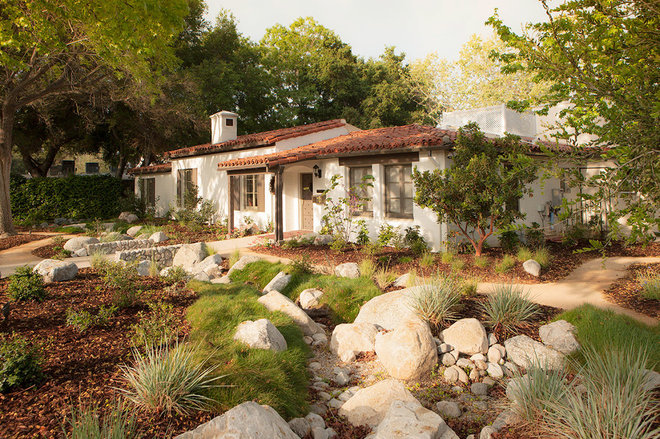
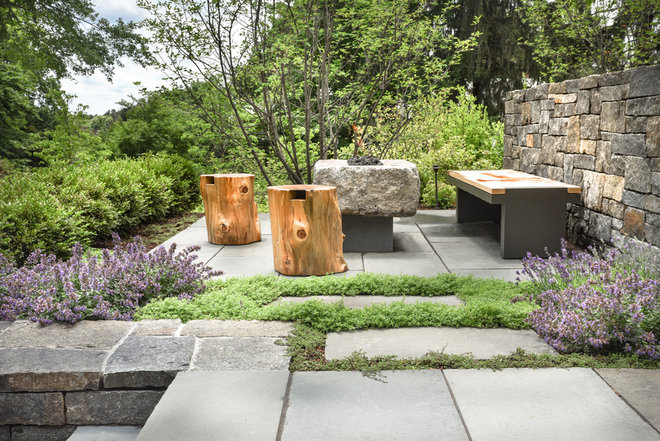
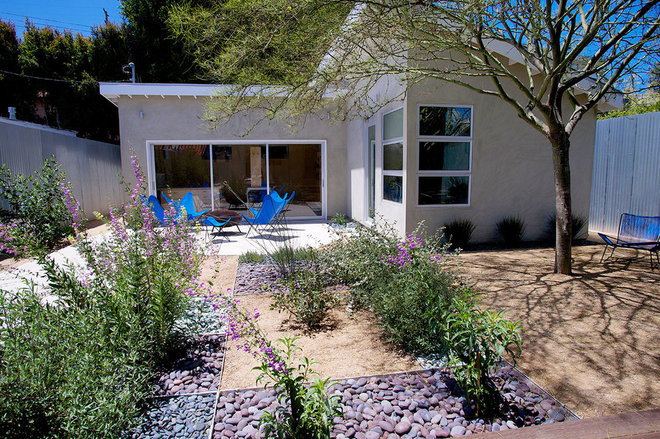
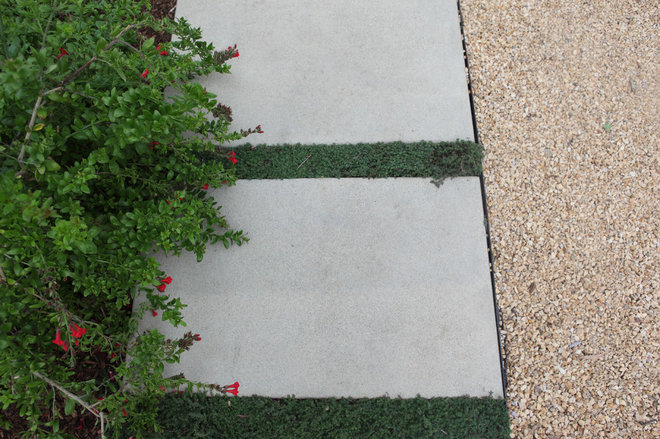
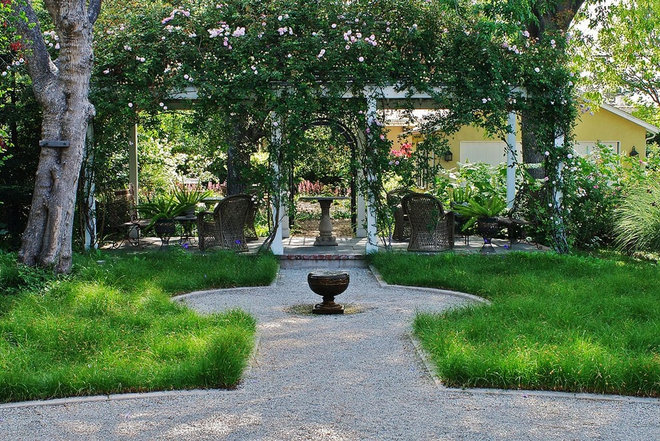
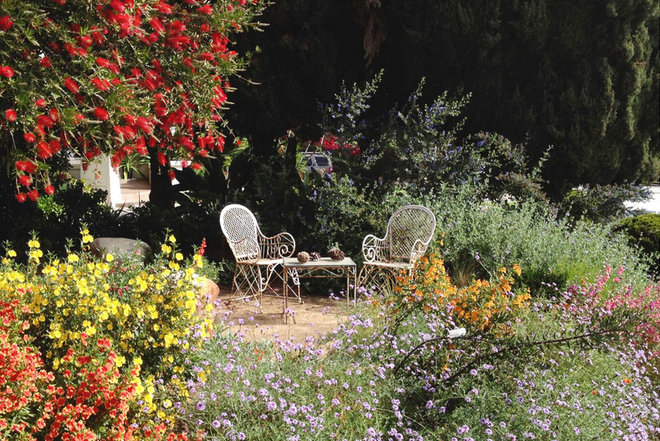
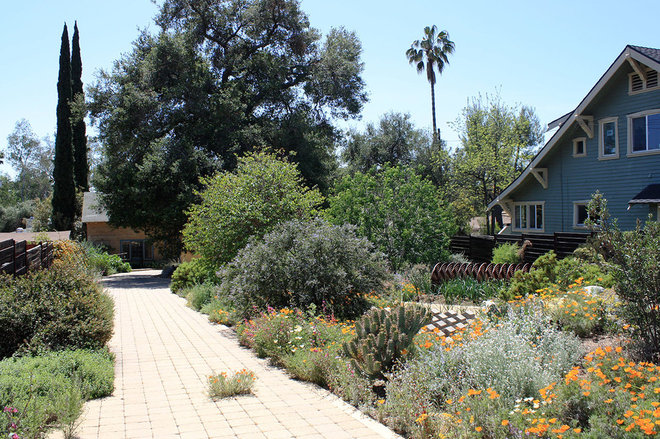
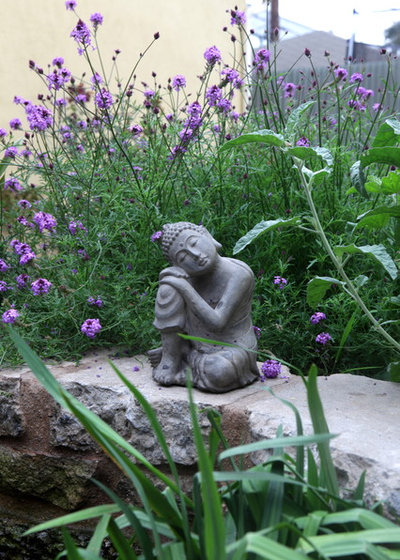








No comments:
Post a Comment